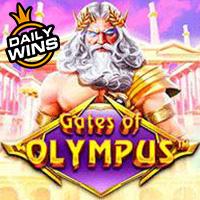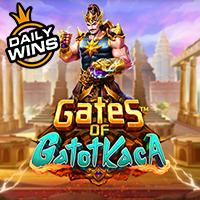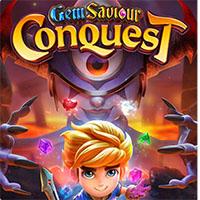

















Building upon the foundational insights from Unlocking Progression: How Modern Games Use Level Systems Like Pirots 4, it becomes clear that understanding what motivates players is essential for designing engaging progression systems. This article explores how motivation influences the way games structure their level-up mechanics, rewards, and content unlocking strategies, aiming to deepen player engagement while maintaining ethical integrity.
1. Understanding Player Motivation: The Foundation of Progression Design
At its core, effective progression design starts with a clear understanding of what drives players. Motivation can be broadly categorized into intrinsic factors—those driven by internal satisfaction, mastery, and curiosity—and extrinsic factors, such as rewards, rankings, and social recognition. Recognizing this distinction allows developers to tailor mechanics that resonate with diverse player goals.
- Intrinsic motivation fosters long-term engagement through personal achievement and exploration.
- Extrinsic motivation leverages external rewards to motivate repeated play and competitive behavior.
Aligning progression mechanics with these motivations ensures players find meaningful purpose in their journey, whether they seek mastery or social validation. For instance, a game like Genshin Impact combines intrinsic exploration with extrinsic rewards, creating a balanced motivational ecosystem that sustains ongoing interest.
2. The Psychological Drivers Behind Progression Systems
Progression systems tap into fundamental psychological processes. Reward sensitivity, mediated by dopamine release, reinforces behaviors that lead to rewards, making players eager to pursue new challenges. Level design that provides clear pathways to competence fosters a sense of mastery, which is critical for sustained motivation.
a. Reward sensitivity and dopamine in motivation
Research shows that the anticipation of rewards triggers dopamine spikes, reinforcing behaviors much like a slot machine. Games like Dark Souls utilize this by providing incremental rewards that encourage continued effort despite difficulty, capitalizing on players’ sensitivity to progress and achievement.
b. Achieving mastery through level design
Designing levels that gradually increase in complexity allows players to build competence. Titles such as Super Mario Bros. exemplify this, where each level introduces new mechanics, fostering a sense of mastery that motivates players to progress further.
c. Social recognition and competition
Features like leaderboards, clans, and social achievements leverage players’ desire for recognition. For example, Fortnite’s seasonal rankings and cosmetic rewards create social-driven motivation that encourages ongoing participation.
3. Customizing Progression to Different Player Personas
Players are diverse, with distinct archetypes such as explorers, achievers, socializers, and killers. Recognizing these archetypes enables designers to craft flexible progression pathways that cater to varied motivations. For explorers, narrative and discovery mechanics are key; achievers thrive on levels, badges, and mastery; socializers seek recognition and community; killers focus on competition and rankings.
a. Identifying player archetypes
Tools like the Bartle taxonomy or HEXACO model help developers classify players, informing tailored progression features. For instance, Destiny 2 offers multiple progression tracks—gear upgrades, social reputation, and competitive rankings—to appeal to different archetypes simultaneously.
b. Designing flexible pathways
Implementing branching skill trees, customizable avatars, and varied challenge types allows players to choose their growth trajectory. Games like The Witcher 3 exemplify this with multiple skill trees and narrative choices that influence progression and emotional investment.
c. Case studies of adaptive systems
Adaptive progression, as seen in Assassin’s Creed Odyssey, adjusts difficulty and rewards based on player style, ensuring sustained motivation regardless of individual preferences.
4. Beyond the Level: Motivational Elements in Unlocking Content
Progression isn’t solely about levels. Achievements, badges, and personalization serve as powerful motivators, providing a sense of accomplishment and identity within the game world. Narrative-driven progressions deepen emotional engagement, transforming gameplay into a story players become invested in.
a. Achievements, badges, and personalization
Achievements act as milestones that recognize specific feats, while customizable elements like skins and titles foster personal identity. For example, in Overwatch, cosmetic unlocks motivate players through visual progression, encouraging continued play beyond mere level gains.
b. Narrative-driven progression
Story elements unlocked through gameplay deepen emotional ties. Titles such as The Last of Us Part II integrate narrative rewards with gameplay milestones, creating a sense of purpose that sustains motivation.
c. Dynamic challenges and adaptive difficulty
Adjusting difficulty based on player skill maintains optimal challenge levels. Games like Celeste employ dynamic difficulty to keep players engaged, preventing frustration and fostering a sense of achievement.
5. The Interplay Between Motivation and Player Agency in Progression
Allowing players meaningful choices within progression paths enhances their sense of ownership and control. For example, Skyrim offers a vast open world where players decide how to develop their character, which in turn influences their motivation to explore and improve.
a. Meaningful choices within progression
Choices such as skill specialization, faction allegiance, or narrative decisions impact progression and emotional investment. This approach fosters a personalized experience that aligns with intrinsic motivations.
b. Balancing guidance and exploration
Designers must strike a balance between structured advancement and freedom. Too much guidance can stifle creativity, while excessive exploration may lead to confusion. Titles like Hades skillfully combine guided progression with player agency.
c. Player agency and perceived value
When players feel their choices truly matter, their perceived value of progression increases. This psychological effect encourages continued engagement, as seen in complex decision trees in games like Divinity: Original Sin II.
6. The Risks of Motivational Manipulation and Over-Progression
While leveraging motivation is effective, it carries risks. Grind-heavy systems can cause burnout, frustration, and feelings of manipulation if rewards are perceived as pay-to-win or exploitative. Ethical design practices emphasize transparency and player well-being.
a. Avoiding burnout and frustration
Implementing systems like daily caps, varied challenge types, and meaningful rewards prevents fatigue. For example, World of Warcraft uses daily quests and diminishing returns to balance player motivation with sustainability.
b. Ethical considerations
Designers must avoid manipulative hooks that exploit players’ psychological vulnerabilities. Transparency about reward structures and avoiding “dark patterns” foster trust and long-term loyalty.
c. Rewarding without manipulation
Progression should feel earned. Systems that reward genuine effort—such as skill-based matchmaking or meaningful content unlocks—maintain integrity and player satisfaction.
7. Bridging Back to Level Systems: Integrating Motivation into Structural Design
Understanding motivation enhances traditional level-up mechanics. Instead of solely numeric increases, incorporating motivational layers—such as narrative rewards, personalized content, or social recognition—creates a richer experience. This approach was evident in Pirots 4, where levels unlocked not just power but also story elements and community features.
a. Refining level system mechanics
Adding contextual rewards, branching skill trees, and unlockable content linked to motivation enhances player investment. For example, World of Warcraft provides both immediate gear upgrades and long-term narrative rewards tied to leveling.
b. Enhancing level-ups with motivational layers
Incorporating cosmetic rewards, story snippets, or community recognition at each level fosters a sense of achievement beyond raw stats. Titles and badges serve as social proof of progress, encouraging continued engagement.
c. From motivation-driven design to deeper engagement
Ultimately, integrating motivation into level systems transforms them from simple metrics into meaningful journeys. This synergy creates a compelling cycle—players are motivated to progress, and progression fuels further motivation, echoing the principles outlined in the parent article.
